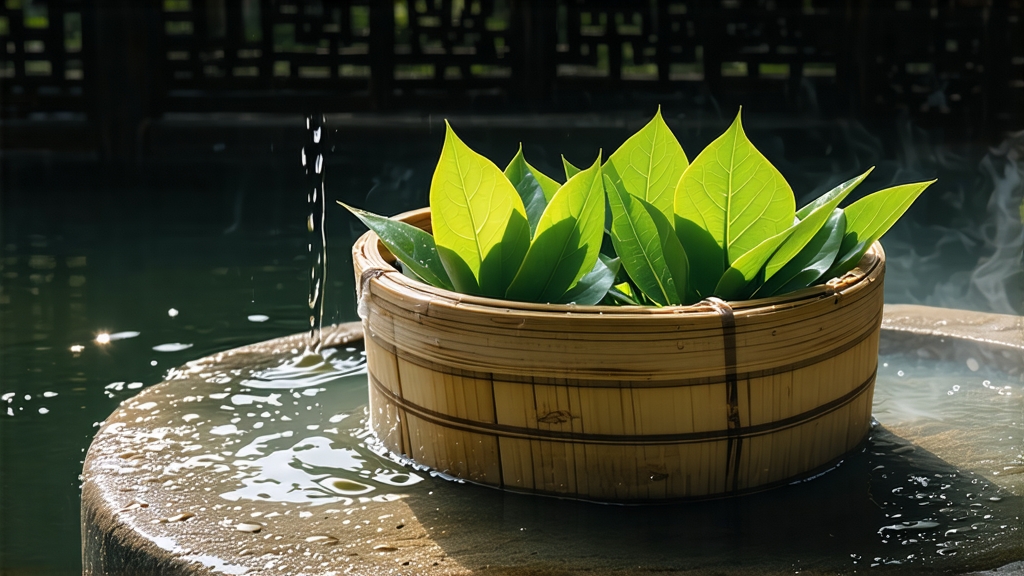
Longjing, literally “Dragon-Well,” is the most celebrated green tea in China, a silky, chestnut-sweet liquor that embodies the gentle haze of early spring over Hangzhou’s West Lake. First praised in Lu Yu’s Classic of Tea (760 CE), the variety entered imperial fame when the Qianlong Emperor (r. 1735–96) planted eighteen bushes beside the Lion Peak well during his southern tours; those same bushes still survive, pampered and fenced, a living monument to tea lore. Today the name Longjing is legally protected; only leaves picked within the 168 km² core zone of Hangzhou’s Xihu District may bear the coveted “West Lake Longjing” seal, while identical cultivars grown in neighboring counties are marketed simply as “Zhejiang Longjing.” Within the core zone four micro-terroirs are most prized—Shi (Lion), Long (Dragon), Yun (Cloud), and Hu (Tiger)—each offering subtle shifts in aroma: Shi delivers a pronounced orchid note, Long a brighter bean fragrance, Yun a creamier body, and Hu a lingering mineral finish.
The tea belongs to the early-sprouting Camellia sinensis var. sinensis cv. Longjing #43, a clonal selection released in 1987 that retains the classic willow-leaf shape yet flushes ten days earlier than the heirloom qunti zhong (“group-type”) bushes. Buds are plucked at the “sparrow’s tongue” stage—one tender leaf enfolding an unopened tip—when the leaf’s amino-acid-to-catechin ratio peaks, guaranteeing the famous umami sweetness. A master picker can harvest only 600 g of fresh leaves in a day; 50 000 buds (five hours of finger-tip work) yield a mere 100 g of finished tea.
Craft begins the moment the basket reaches the village workshop. The leaves are spread 3 cm thick on bamboo trays and withered for 2–4 hours in a shaded draft; moisture drops from 76 % to 68 %, softening cell walls for the critical pan-firing step. Ten kilograms of leaf will occupy only two woks, each heated to 90 °C by lychee-wood charcoal whose steady infrared heat prevents scorching. The maker—always standing, always barefoot to feel the temperature through the soles—employs ten distinct hand motions named after their visual metaphor: “grasp and shake,” “ buckle and press,” “shake and scatter,” “rub and straighten.” For the first two minutes the leaves are tossed against the scorching iron to kill green enzymes; the temperature is then dropped to 60 °C for the next twelve minutes while the master repeatedly presses each bud against the wok wall, coaxing the flat, jade sword shape. A final gentle toasting at 40 °C sets the moisture at 5 % and locks in the signature toast-y aroma Chinese tasters describe as “freshly roasted chestnut.” Total processing time: fifteen breath-held minutes; margin for error: none.
To brew Longjing like a Hangzhou native you need a tall, thin glass—not a teapot—so the leaves dance vertically, a choreography locals call “the green forest standing up.” Pre-warm the glass with 85 °C water; this is cool enough to preserve the tea’s vitamin C yet hot enough to coax aromatics. Use 3 g of leaf (a heaped teaspoon) for 150 ml of water. First infusion: fill to one-third height, gently rotate the glass to awaken the leaves, then top up after thirty seconds. Total steeping time: ninety seconds. Second infusion: add water immediately after the first pour and steep forty seconds; the leaf, now fully open, releases a sweeter, lighter liquor. A third infusion is possible at sixty seconds, but connoisseurs often stop at two, preferring intensity over extension. Never cover the glass; trapping steam dulls the bright top notes.
Evaluation follows four sensory passes: sight, scent, taste, and touch. Hold the glass against white paper: the liquor should glow the color of early spring willow, never yellow-brown. Inhale directly above the surface; you should detect a three-layer aroma—top of toasted soybean, middle of fresh artemisia, base of sweet corn milk. When sipping, let the liquor rest on the tip of the tongue for two seconds; amino acids trigger a mouth-watering response known as “sheng jin,” literally “pro